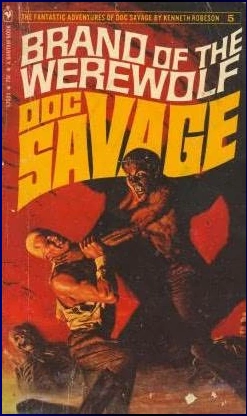Sunday, March 31, 2019
Saturday, March 30, 2019
ASTOUNDING
 |
I've had a lifelong interest in science fiction so when I spied a copy of this book late last year, I knew I had to have it. I received a copy as a Christmas present and I finally got around to reading it last week.
ASTOUNDING: JOHN W. CAMPBELL, ISAAC ASIMOV, ROBERT A. HEINLEIN, L. RON HUBBARD, AND THE GOLDEN AGE OF SCIENCE FICTION by Alec Nevala-Lee is a massive (over 500 pages), biography of one magazine and four men, all of whom played a crucial role in the development of literary science fiction in the 20th century.
Despite it's length, Nevala-Lee writes in a highly readable style and I tore through this book in a matter of days. Of course, it helps when the subject matter is so incredibly fascinating. I never had the chance to read an issue of ASTOUNDING when I was a kid, primarily because the magazine had become ANALOG by then. I still never picked up an issue, preferring instead the two long-running stalwarts AMAZING and FANTASTIC for my sf magazine reading. Still, ASTOUNDING was, for a time, regarded as the cream of the crop of the science fiction pulp jungle, publishing stories by the very best authors in the field and, incidentally, paying more than any of the competitors.
All four of the men profiled within ASTOUNDING share similar traits. Campbell, Asimov, Heinlein and Hubbard were all incredibly bright, super smart, highly talented men as both writers and would be scientists. They were also extremely quirky individuals with Campbell exhibiting horrifically racist viewpoints, Heinlein becoming a grumpy old right-winger, Hubbard going down the rabbit hole of his own invention that is Scientology with Asimov, the youngest and most prolific writer (fiction and non-fiction) of the bunch, still pinching women's fannies into his old age.
Nevertheless, these men all had a vision for the future that could be expressed, investigated and promoted through the genre of science fiction. Science fiction allowed these writers (and others), platforms from which to launch ideas about technology, society, psychology, warfare and other pertinent concerns. Indeed, Campbell did such a good job of imagining the atomic bomb (based solely on bits and pieces of information and his own knowledge of nuclear physics) that the FBI paid him a visit after he published a story that too closely predicted the then-in-development atomic bomb. "We guessed right" was Campbell's response.
The end result of reading a book like this is to make the reader want to seek out and read the works of the featured writers (and others mentioned in the text). That's just what I've set out to do. I'm currently reading THE BLACK STAR PASSES by John W. Campbell and hope to post a review as soon as I've finished it.
In the meantime, I give ASTOUNDING my highest recommendation. Any reader who has an interest in science fiction, will enjoy this book. Whether you're a long time fan or a newcomer to the genre (through some current gateway drug into the world of SF), this book is an absolute must read.
Here are the issues of ASTOUNDING that I have in my collection of pulp magazines. These beauties were purchased from a comic book shop in Waco, Texas in the summer of 2016. Enjoy.
|
Saturday, March 9, 2019
THE TREMBLING EARTH CONTRACT
Monday, March 4, 2019
DOC DOUBLE HEADER
Subscribe to:
Posts (Atom)





